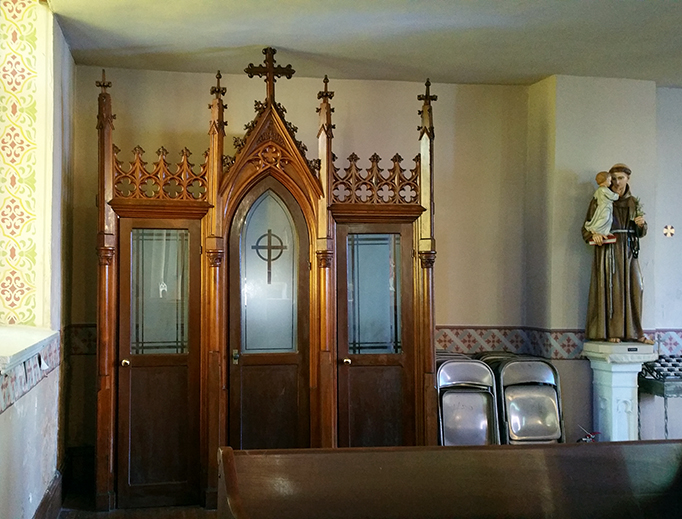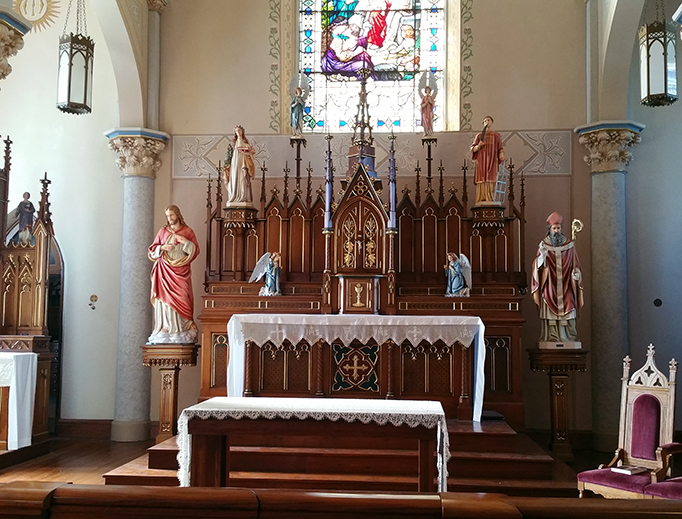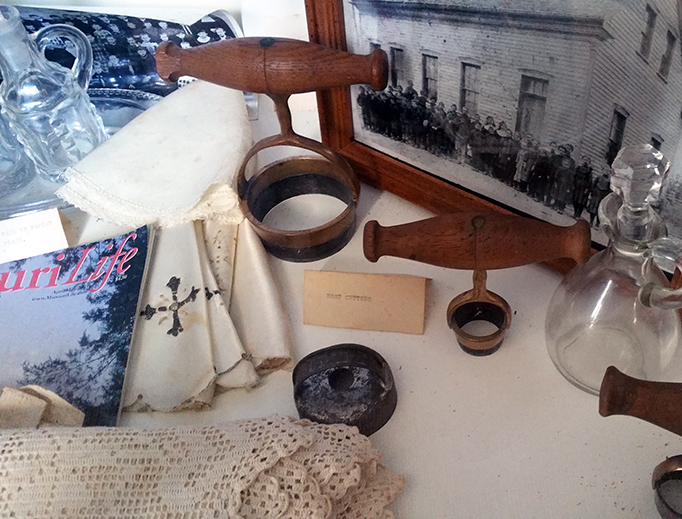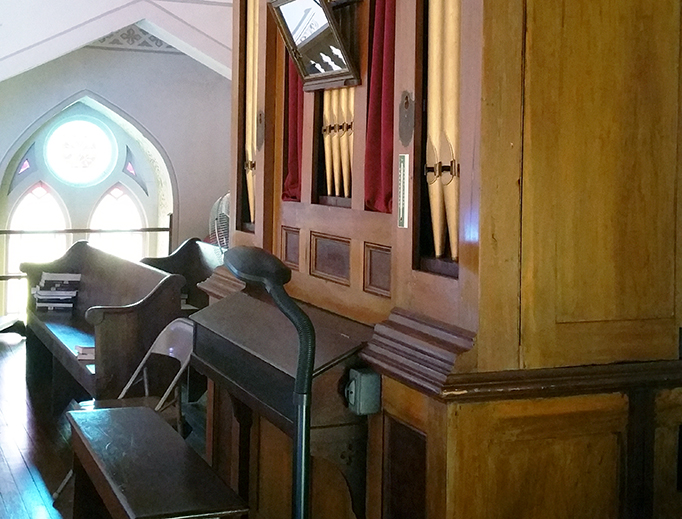This Church-Museum is a Precious Gem
St. Martin Catholic Church in Starkenburg, Missouri, is one of a kind.
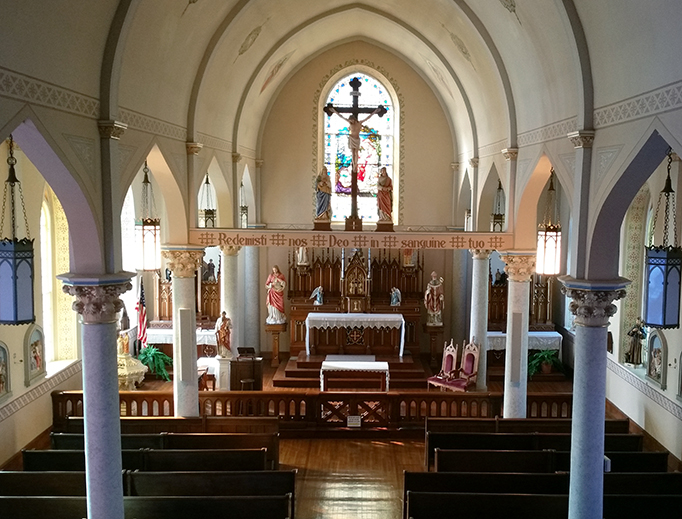
In my travels, I’ve seen a lot of museums, but I’ve never seen one quite like St. Martin Catholic Church in Starkenburg, Missouri.
The museum is a church and the church is a museum.
It’s fascinating.
In 1847, German settlers from Hermann, Missouri, came to the area of the state known as the Rhineland, or Loutre Island, along the Missouri River. Later, the name was changed to Starkenburg. With no resident priests, the settlers depended on the occasional visits of missionaries for the sacraments. When the missionaries visited, a barn served as a makeshift church. No one really knows its origin, but in the barn there was a statue of the Blessed Virgin Mary that the townspeople called “Weisse dame” or “White Lady.”
By 1848, the residents of Starkenburg had managed to form a parish and it was chartered under the name St. Martin, after St. Martin of Tours. In 1849, the parish obtained forty acres of land and a log church was built on the property. The White Lady was given her own home when, in 1852, the parishioners of St. Martin’s built a log chapel for her. The congregation frequently carried the statue in processions around the extensive parish grounds. These celebrations even attracted the attention of the non-Catholics in the neighborhood. Miracles have occurred on the grounds, attributed to the intercession of Mary.
The log church continued to serve as the worship space for St. Martin’s until 1872, when parishioners began the construction of a stone church with rock from a nearby quarry. The cornerstone was laid the next year, the building was completed, and the pastor, Fr. Joseph Schaefer, placed the White Lady inside in a place of honor. The church itself was consecrated in 1874. The new church was beautiful, of Gothic style and with a large bell tower.
In time, the White Lady was relegated to an attic storage space, rediscovered years later, and enthroned in what is now the Shrine of Our Lady of Sorrows. I’ve written about that in a previous post. Responsibility for St. Martin’s was assumed by the Franciscan Friars in 1877. They built a friary annexing the church proper and continued ministering there until a terrible fire devastated the friary annex in 1976. The structure was rebuilt, but this time as a museum that was to house the artifacts, vestments, vessels, furnishings, photographs, and other memorabilia dating back to the first years of the parish. St. Martin’s is no longer a functioning parish, but the church is used for special occasions and celebrations.
And that is what makes this church-museum both unique and captivating.
Upon entering, one would never know that Mass isn’t said there regularly. Except for the extinguished sanctuary lamp, the church looks like any other parish church. Everything is intact. The missals rest in their holders in the front of each pew as if they’d been placed there by Mass attendees that very morning. The candles wait to be relit for the next Liturgy, the altar remains draped and at the ready. The amazing 1860 Pfeffer organ, at one time the only one like it known to exist, still rests in the choir loft with sheet music still on its tray. The lists of songs for the last Mass have not been erased from the board and the choir’s music books wait on the ends of the seats. It’s eerie and mystifying all at the same time.
A sign is posted on the far end of the Communion rail, inviting visitors to step into the sacristy to view the museum. Passing into the sacristy is like passing into the annals of history. Glassed cases contain items, prayer books, documents, sacramentals, photos, linens, and Mass kits from a long ago as the 1800s. Included were pre-Civil War era host makers, used to press and bake the unleavened bread to be used for the Eucharist. Item after item after item, echoes of days gone by and the foundations of St. Martin Catholic Church.
It’s an absolutely gorgeous church and in superb condition for its age. “Sneaking” up into the choir loft was exhilarating and touching the old organ pipes that were crafted a year before the War Between the State began was thrilling. The museum held me spellbound. They weren’t like other museum exhibits – they told the stories of those whose sweat and sacrifice built the church and parish of St. Martin. It was as if the former priests and parishioners had personally placed them there as a gift for wayfarers.
As I meandered around the church, I felt an uncontrollable rush of sadness. I felt as though it was somehow unjust – perhaps even sacrilegious – to not use this treasure for parish liturgies. How could they let it just sit?
The unofficial historian for the Shrine of Our Lady of Sorrows and St. Martin’s Catholic Church, Shirley Koenig, explained it to me.
“A larger, newer church was built a few miles away that combined St. Martin’s and another parish,” she said. “We keep St. Martin’s this way to preserve this historic church and to keep the items within it precious. Otherwise, they could be lost, get into the hands of people who wouldn’t respect them or end up in consignment somewhere.”
Therein lies the holy and inviting mystique of St. Martin’s Catholic Church in Starkenburg, Missouri.
Precious is exactly the right word. It’s assuredly a precious gem and there really isn’t anything else quite like it.
For more information and to plan your visit, go to: http://historicshrine.com/home
